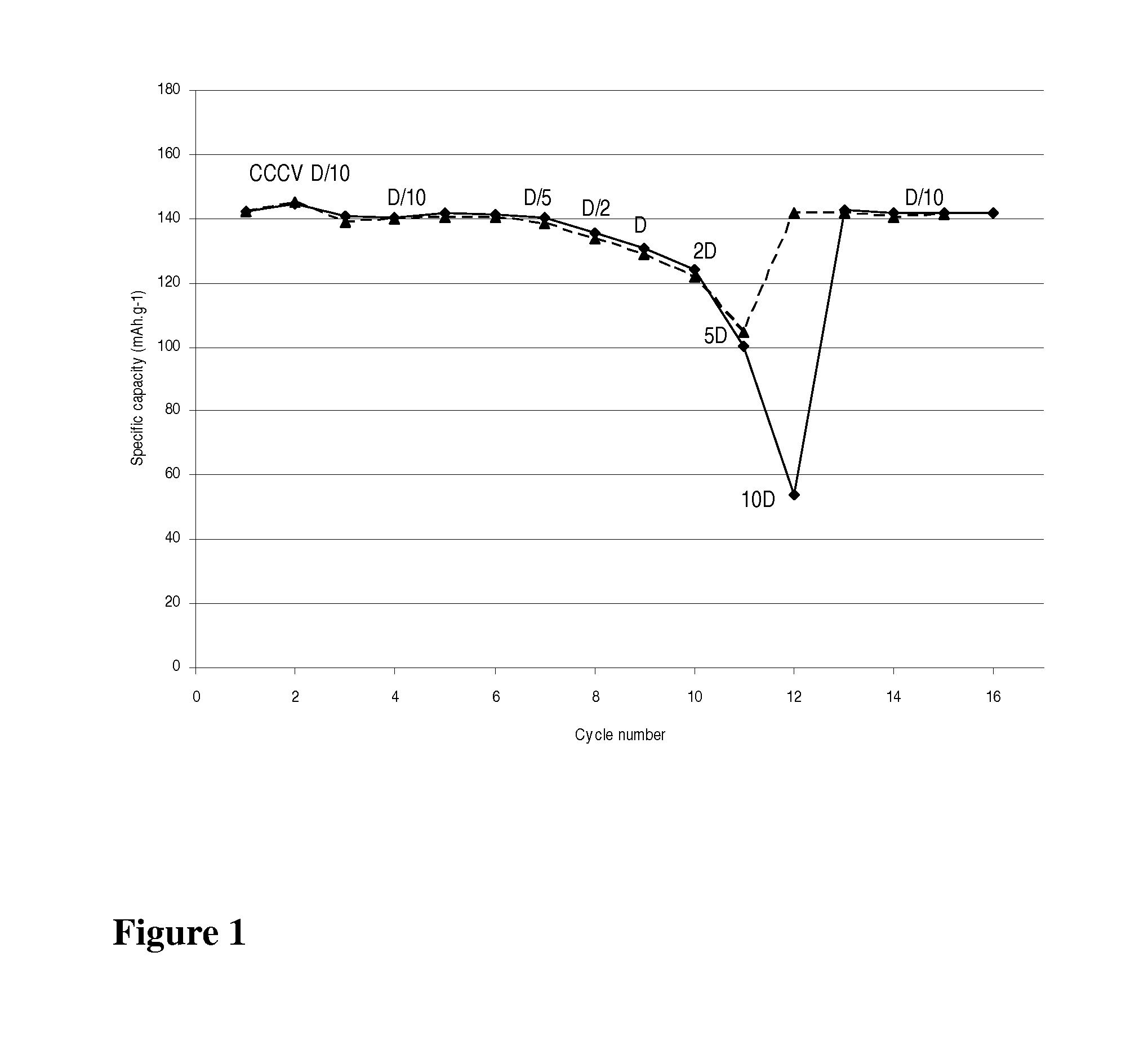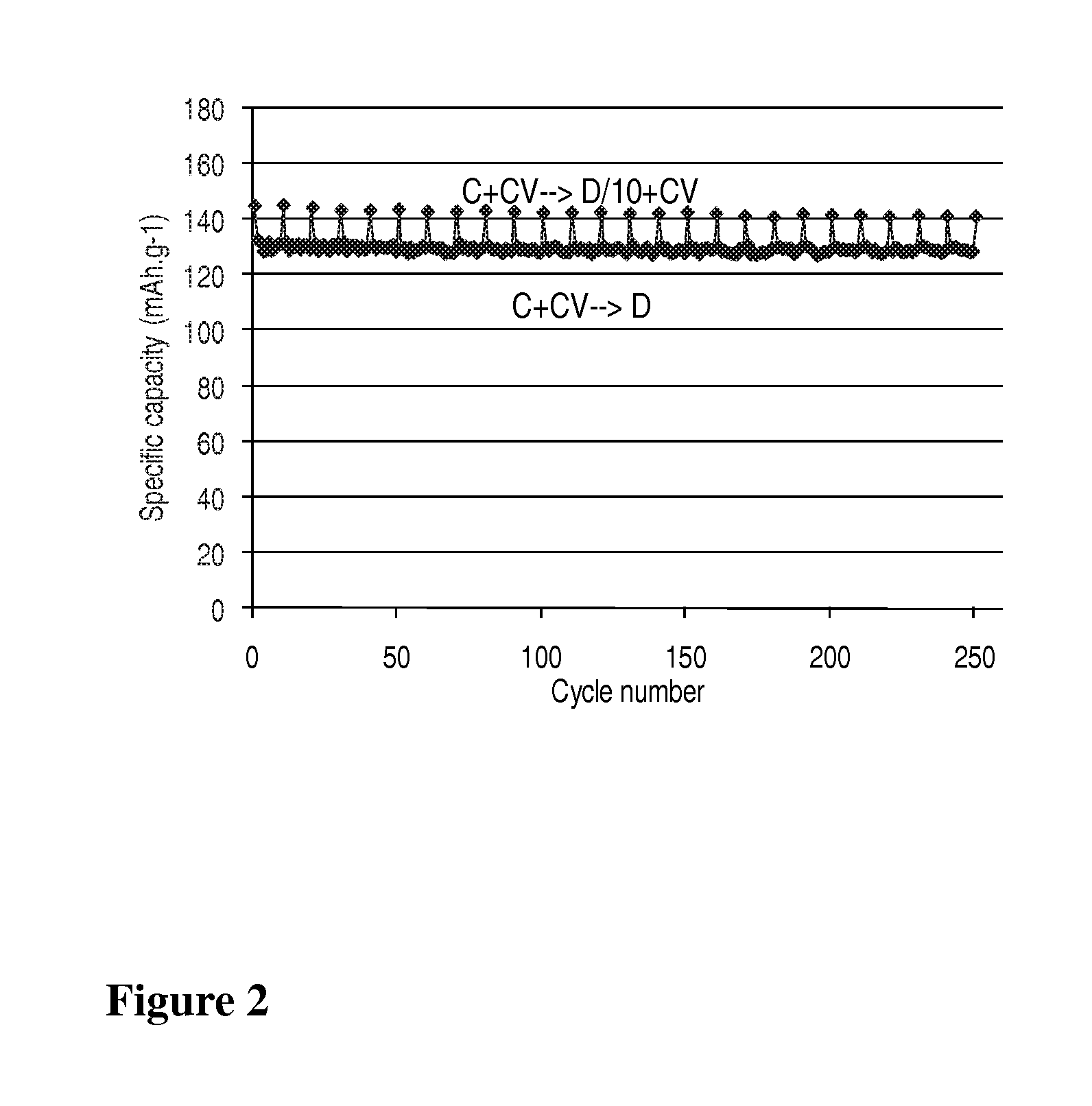Inorganic binders for battery electrodes and aqueous processing thereof
a battery electrode and inorganic binder technology, applied in the field of rechargeable lithium battery electrodes, can solve the problems of limited electrochemical and thermal stability of the electrode, incompatible with many active electrode materials, and lithium metal phospha
- Summary
- Abstract
- Description
- Claims
- Application Information
AI Technical Summary
Benefits of technology
Problems solved by technology
Method used
Image
Examples
example 1
Lithium Manganese / Iron Phosphate Cathode with Lithium Phosphate Binder
[0032]A LiMn0.8Fe0.2PO4 / carbon nanocomposite powder (1 g) is dispersed with pistil and mortar in a solution of 50 mg LiH2PO4 (Aldrich) in 2 mL water. After addition of 0.1 mL ethanol for improved wetting the dispersion is spread with a doctor blade onto a carbon coated aluminum foil and dried in air up to 200° C. The thus obtained coating exhibits excellent adhesion even on bending of the foil. Its electrochemical performance is equivalent to that with 7.5% PVdF as binder (FIG. 1).
example 2
Lithium Manganese / Iron Phosphate Cathode with Sodium Polyphosphate Binder
[0033]A LiMn0.8Fe0.2PO4 / carbon nanocomposite powder (1 g) is dispersed with pistil and mortar in a solution of 50 mg sodium polyphosphate (NaPO3)n (Aldrich) in 2 mL water. Electrodes are prepared as described in example 1 and show similar performance.
example 3
Lithium Manganese / Iron Phosphate Cathode with Lithium Phosphosilicate Binder
[0034]A LiMn0.8Fe0.2PO4 / carbon nanocomposite powder (1 g) is dispersed in a perl mill in a solution of 25 mg LiH2PO4 (Aldrich) and 25 mg Li2Si5O11 (Aldrich) in 4 mL water (contrary to the strongly basic Li2Si5O11 this solution has a neutral pH). Electrodes are prepared as described in example 1 and show similar performance.
PUM
| Property | Measurement | Unit |
|---|---|---|
| Water solubility | aaaaa | aaaaa |
Abstract
Description
Claims
Application Information
 Login to View More
Login to View More - R&D
- Intellectual Property
- Life Sciences
- Materials
- Tech Scout
- Unparalleled Data Quality
- Higher Quality Content
- 60% Fewer Hallucinations
Browse by: Latest US Patents, China's latest patents, Technical Efficacy Thesaurus, Application Domain, Technology Topic, Popular Technical Reports.
© 2025 PatSnap. All rights reserved.Legal|Privacy policy|Modern Slavery Act Transparency Statement|Sitemap|About US| Contact US: help@patsnap.com



